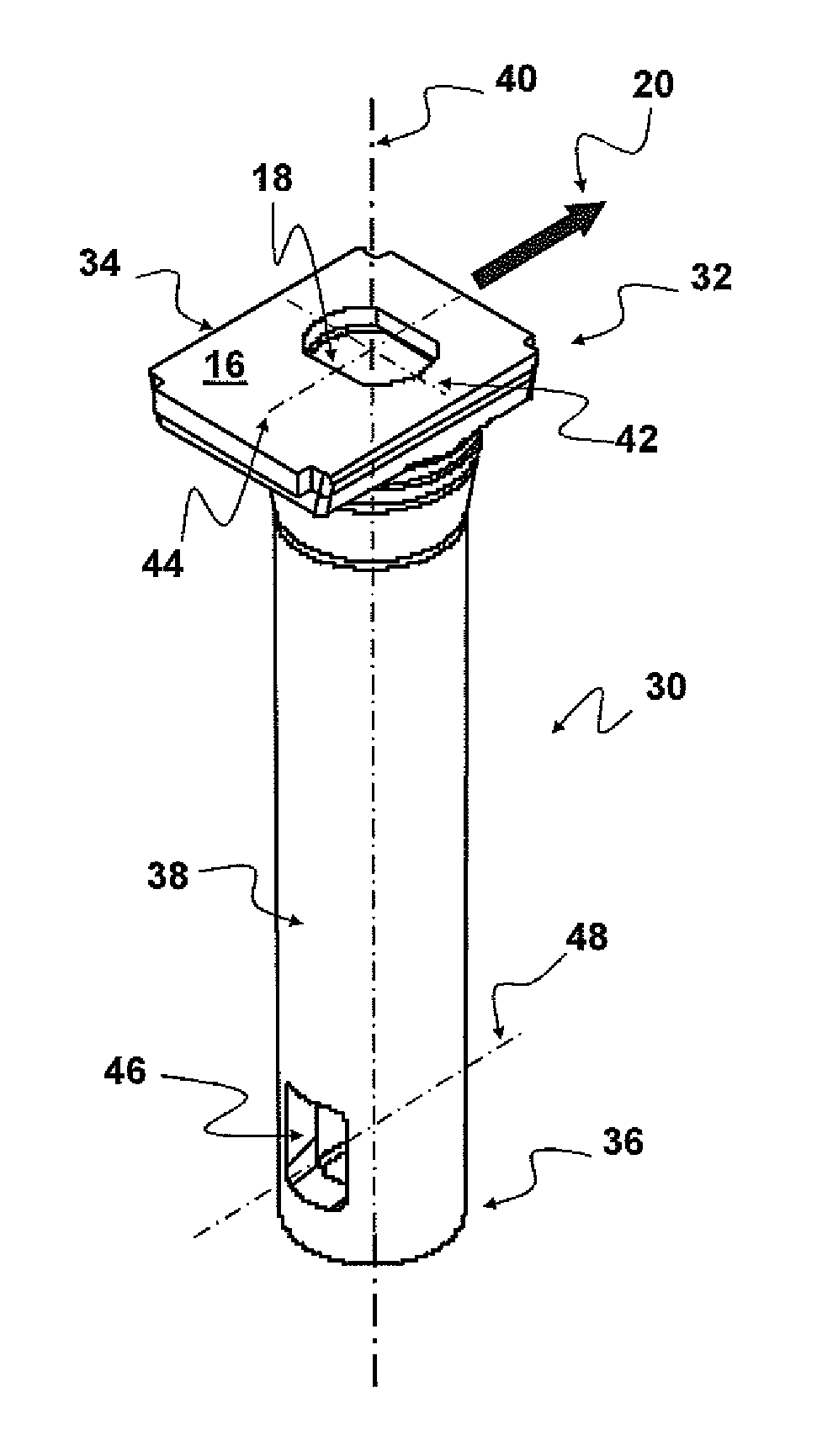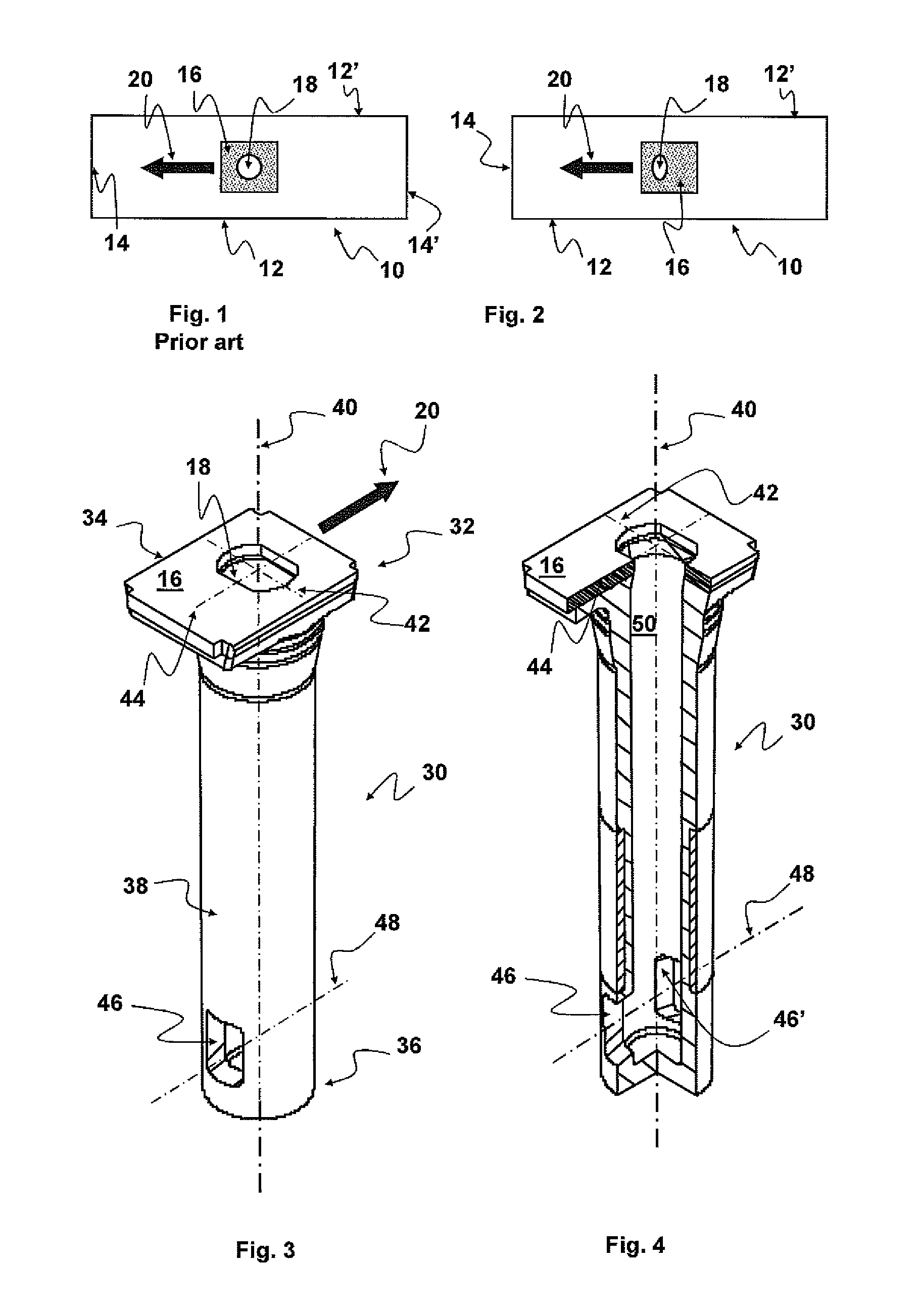Pouring nozzle and assembly of such a pouring nozzle with an inner nozzle
a technology of pouring nozzle and inner nozzle, which is applied in the direction of packaging, manufacturing converters, liquid dispensing, etc., can solve the problems of nozzle not being used for continuous casting of molten steel, raising a serious security concern, and risk of leakage, so as to reduce the disturbance of the flow of steel
- Summary
- Abstract
- Description
- Claims
- Application Information
AI Technical Summary
Benefits of technology
Problems solved by technology
Method used
Image
Examples
Embodiment Construction
[0031]An ingot mould 20, roughly rectangular in shape, having two long sides 12, 12′ and two small sides 14, 14′, can be seen schematically in FIGS. 1 and 2. At the centre of the ingot mould a pouring nozzle seen from above is shown, only the top surface 16 of which provided with a pouring orifice 18 can be seen. The details of the supplying and exchanging device are not visible in these figures. The direction 20 of sliding of the pouring nozzle in the nozzle supplying and exchanging device are also shown in each ingot mould. It will be noted that the discharge orifices of the pouring nozzle shown in FIGS. 1 and 2 are aligned in a direction parallel to the direction of sliding 20. Whereas the pouring orifice 18 of the nozzle known from the prior art (FIG. 1) is circular and centred with respect to the top surface 16, the pouring orifice 18 of the pouring nozzle according to the invention (FIG. 2) has an oblong shape. The orifice is elongate in a direction perpendicular to the direct...
PUM
| Property | Measurement | Unit |
|---|---|---|
| distance | aaaaa | aaaaa |
| distance | aaaaa | aaaaa |
| distance | aaaaa | aaaaa |
Abstract
Description
Claims
Application Information
 Login to View More
Login to View More - R&D
- Intellectual Property
- Life Sciences
- Materials
- Tech Scout
- Unparalleled Data Quality
- Higher Quality Content
- 60% Fewer Hallucinations
Browse by: Latest US Patents, China's latest patents, Technical Efficacy Thesaurus, Application Domain, Technology Topic, Popular Technical Reports.
© 2025 PatSnap. All rights reserved.Legal|Privacy policy|Modern Slavery Act Transparency Statement|Sitemap|About US| Contact US: help@patsnap.com


